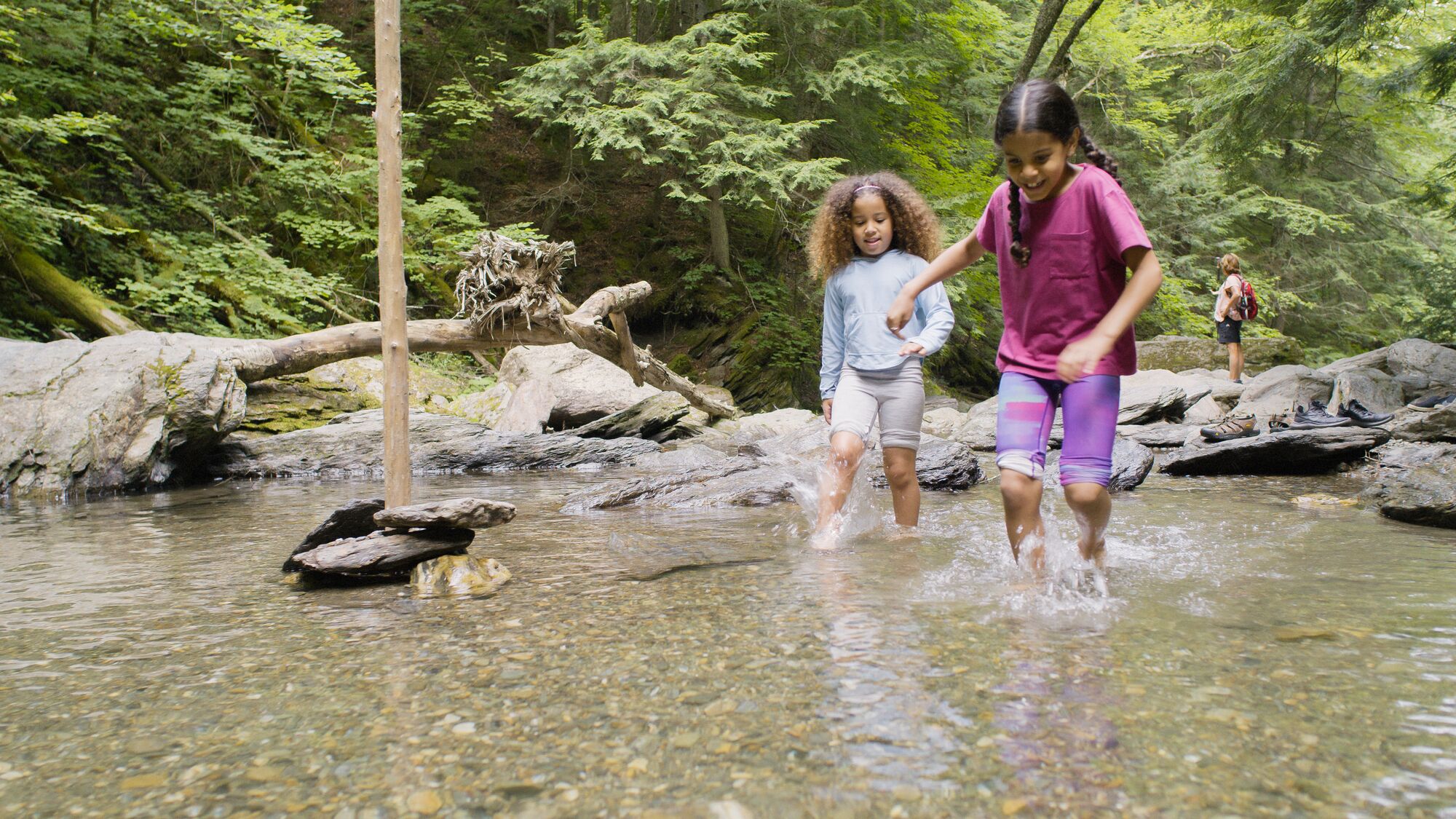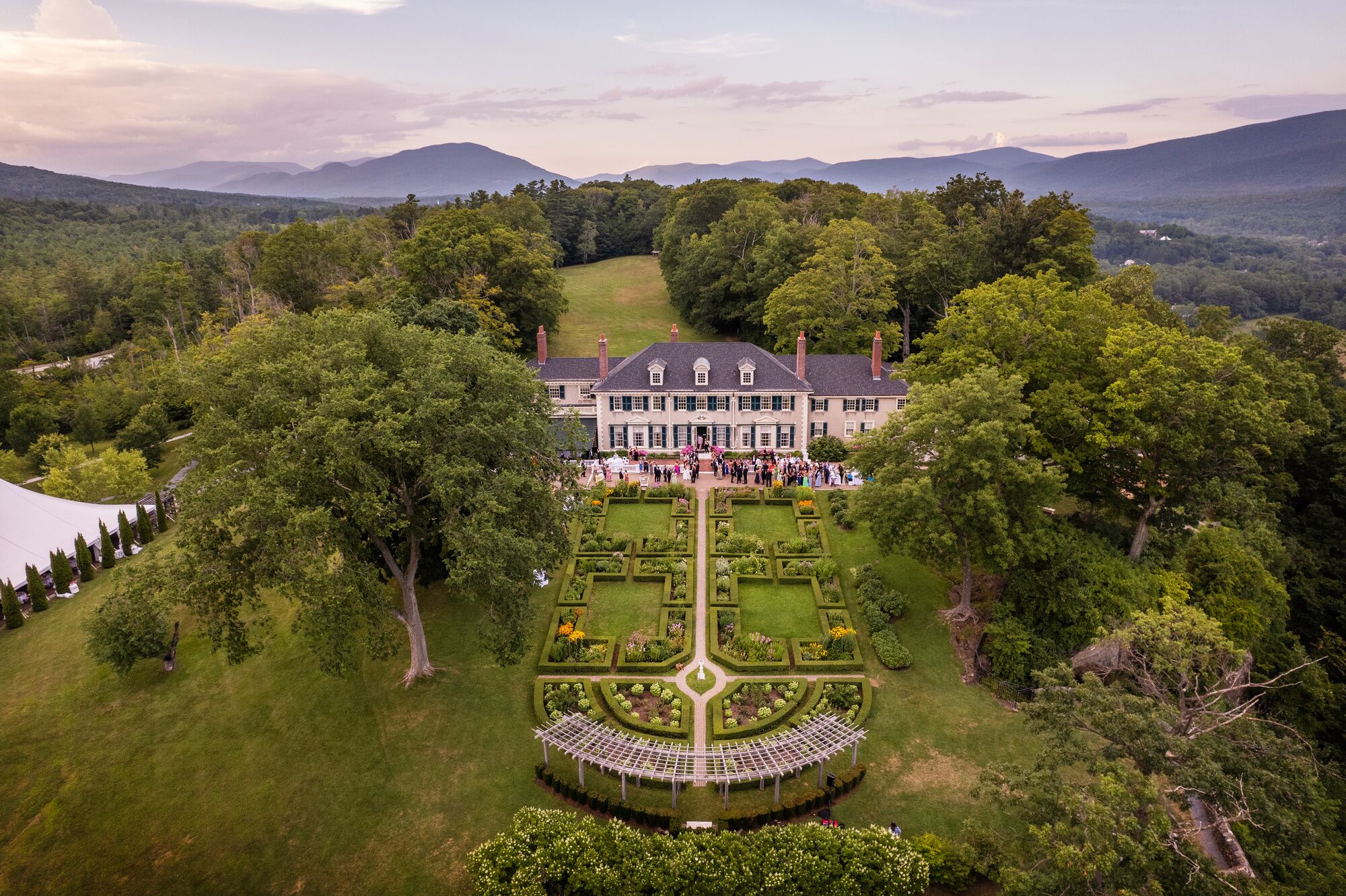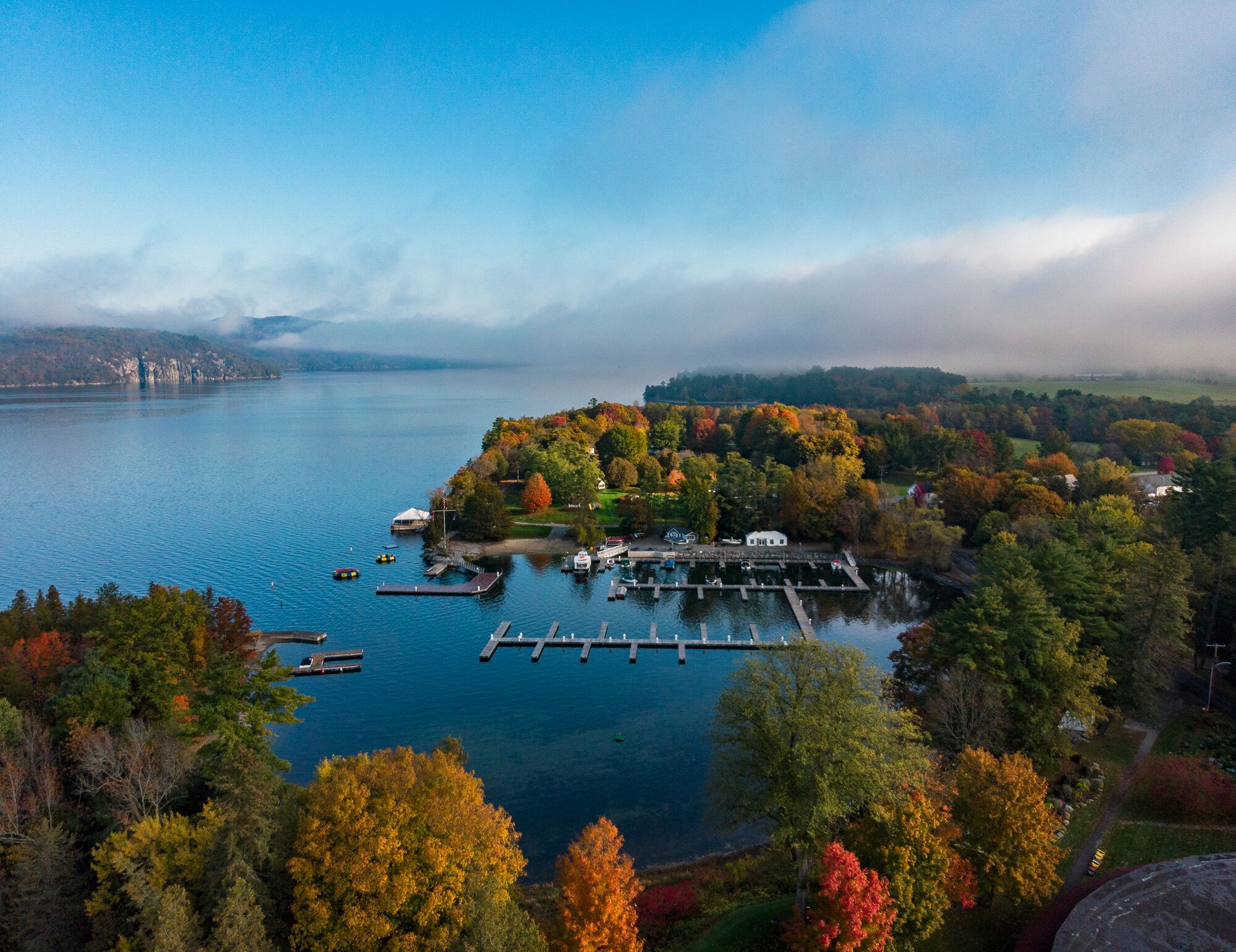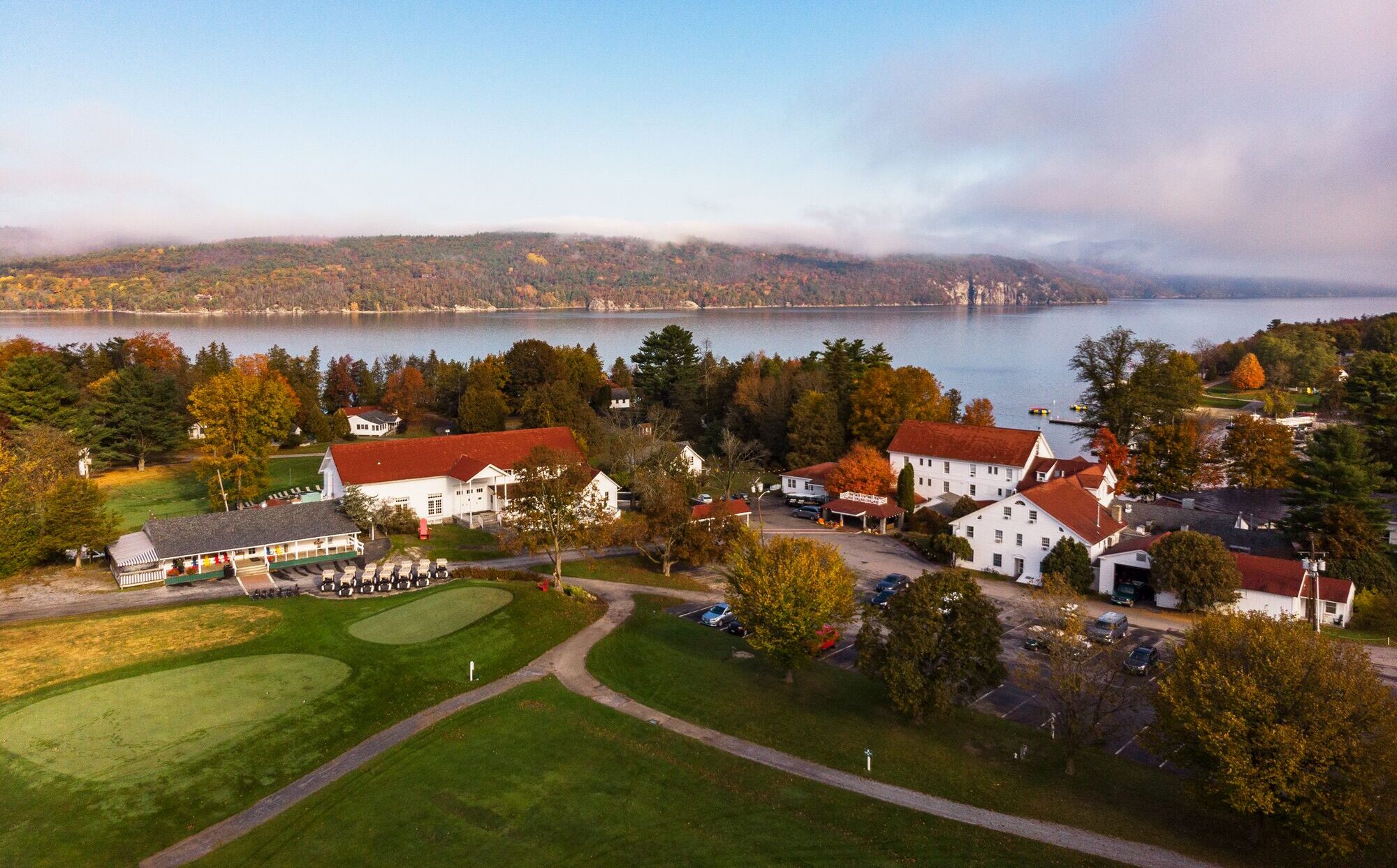Best Time to See Foliage in Vermont
When Do the Leaves Change Color in Vermont?
Fall is a beautiful time to visit Vermont and experience the gradual transition between seasons. The exact timing of peak foliage colors depends on a number of factors and can vary from year to year, but generally, autumn colors reach their crescendo during the last week of September and the first or second week of October.
During the spring and summer, maple leaves supply energy to the tree, using chlorophyll to turn sunlight into sugar. In the fall, cooler temperatures and fewer daylight hours are the leaves’ signal to stop making energy, breaking down the chlorophyll and allowing other pigments in the leaves, such as red and orange, to take center stage. Finally, an abscission layer forms near the end of the fall foliage season when temperatures are colder, creating a wall in the leaf and disconnecting it from the tree, making it easy for wind and rain to drop the leaf to the ground.
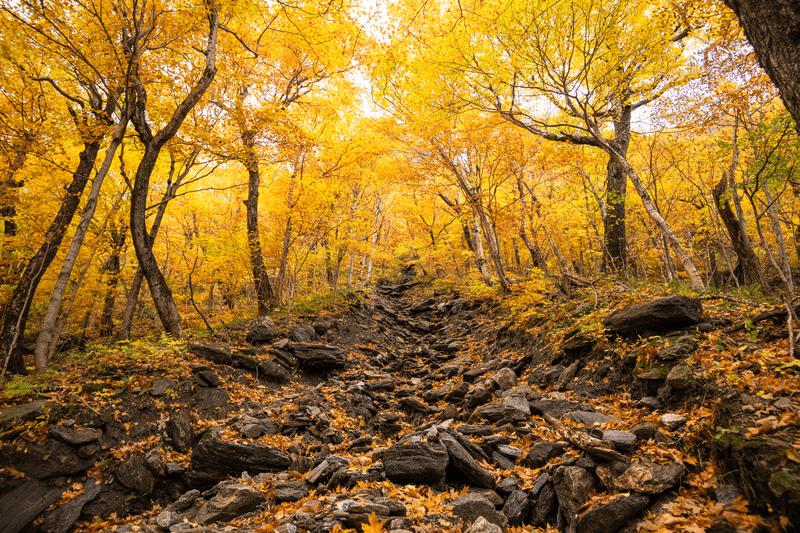
All that chemistry means during peak Vermont foliage, forests blaze with red, orange, and yellow maple trees, leaves crunch under your feet, and the whole state is a riot of autumn color. Vermont’s dense forest covers 70% of the state, meaning you’ll be able to count on beautiful fall views during the week preceding and after peak foliage too, depending on weather conditions and geographic location within the state. Heavy wind or rain and drought earlier in the year can impact when and how colors unfold and how long they stay on the trees.
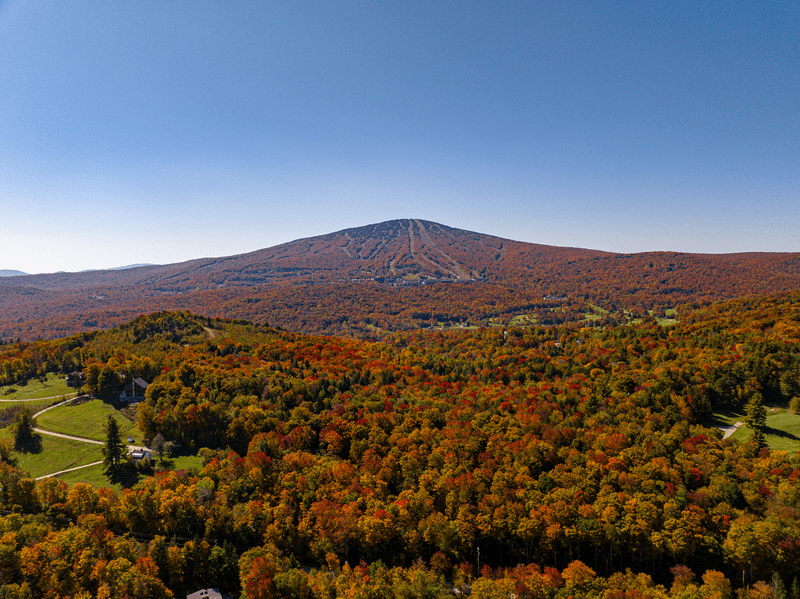
The Best Time to Visit Vermont in the Fall
The rule of thumb is that Vermont fall colors usually start in early to mid-September in the higher elevations and in the northern part of the state, moving into the valleys and southern parts of Vermont as September turns to October. Leaves can hang on until the last week of October or the first week of November, although most will be on the ground by then. Our Fall Foliage Forecaster can give you a sense of how Vermont’s fall color typically unfolds.
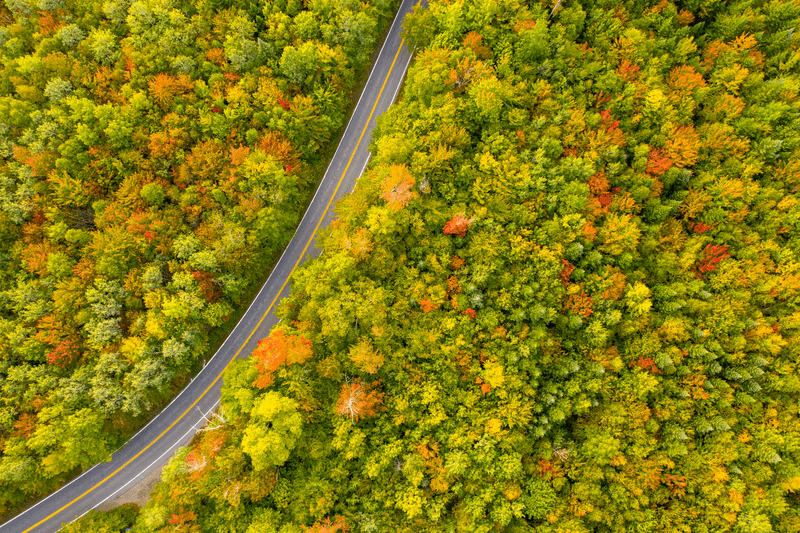
Road tripping around Vermont in the fall can also yield some stunning leaf peeping as colors change, depending on tree species, elevation, temperature, and conditions in that area. Looking for the best route to see fall color? Plan a scenic drive along a river to see the foliage reflecting off the water and drive over a mountain pass connecting historic downtowns. Scenic Vermont Byways and toll roads open to expansive mountain vistas painted in fall colors. Apple orchards, pumpkin picking, scenic chairlift rides, corn mazes, farm or creemee stands, and historic downtowns round out a day touring around the Green Mountains.
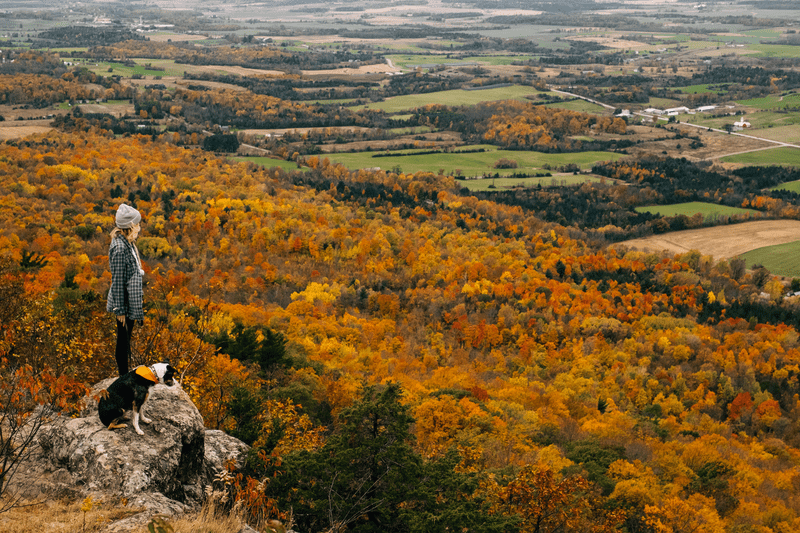
As you explore Vermont fall foliage, don’t hesitate to get out of the car and head into the woods, as color is at its most concentrated right at the source. Finding a lesser-known hike to avoid leaf-peeping crowds or exploring a path or rail trail on your bike or on foot is an immersive way to see foliage, and accessible hikes make Vermont’s beauty easy to reach for those of all ages and ability levels, including those who use wheelchairs. Share your fall adventures with Vermont Tourism on Instagram and Facebook using #ThisIsVT.
